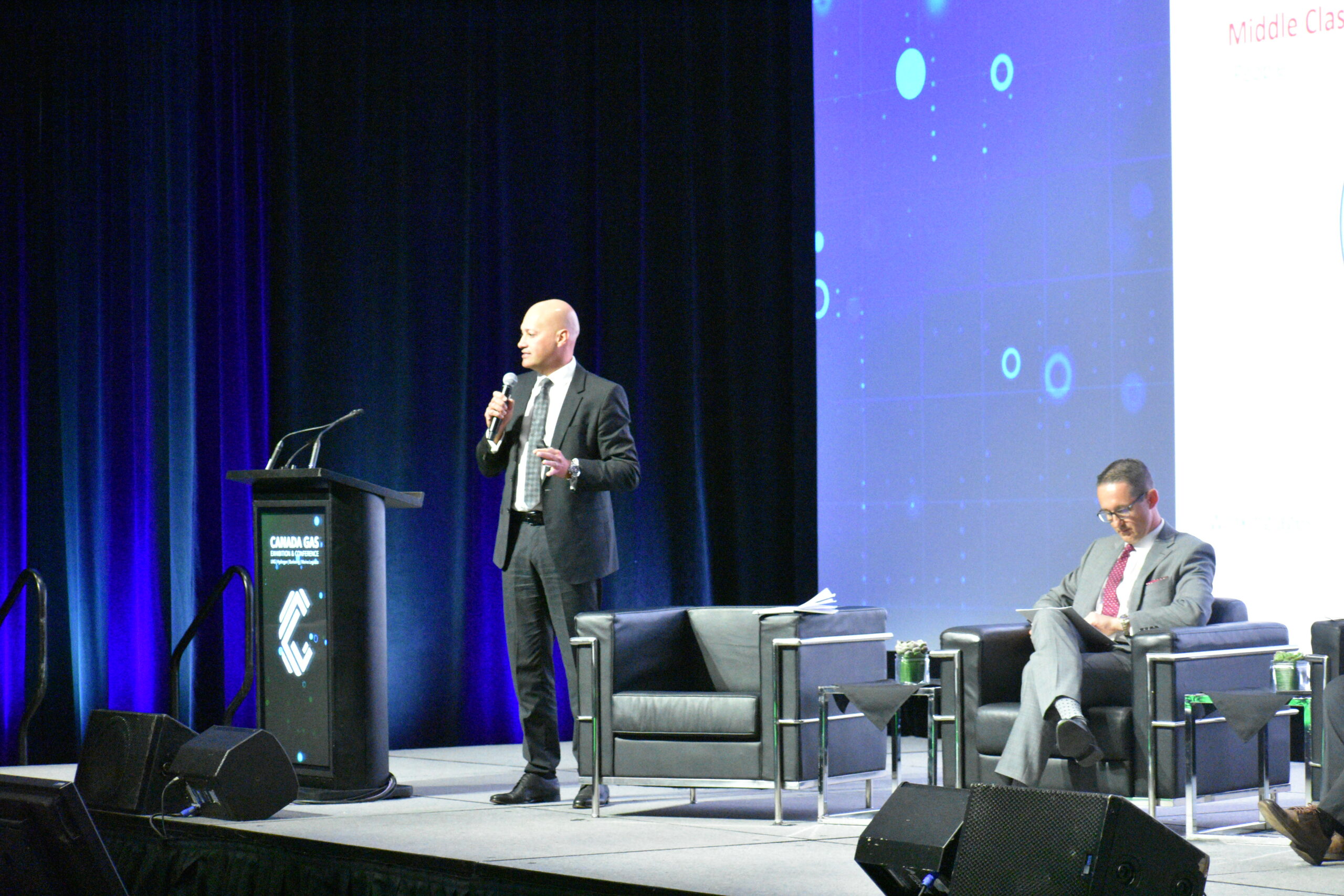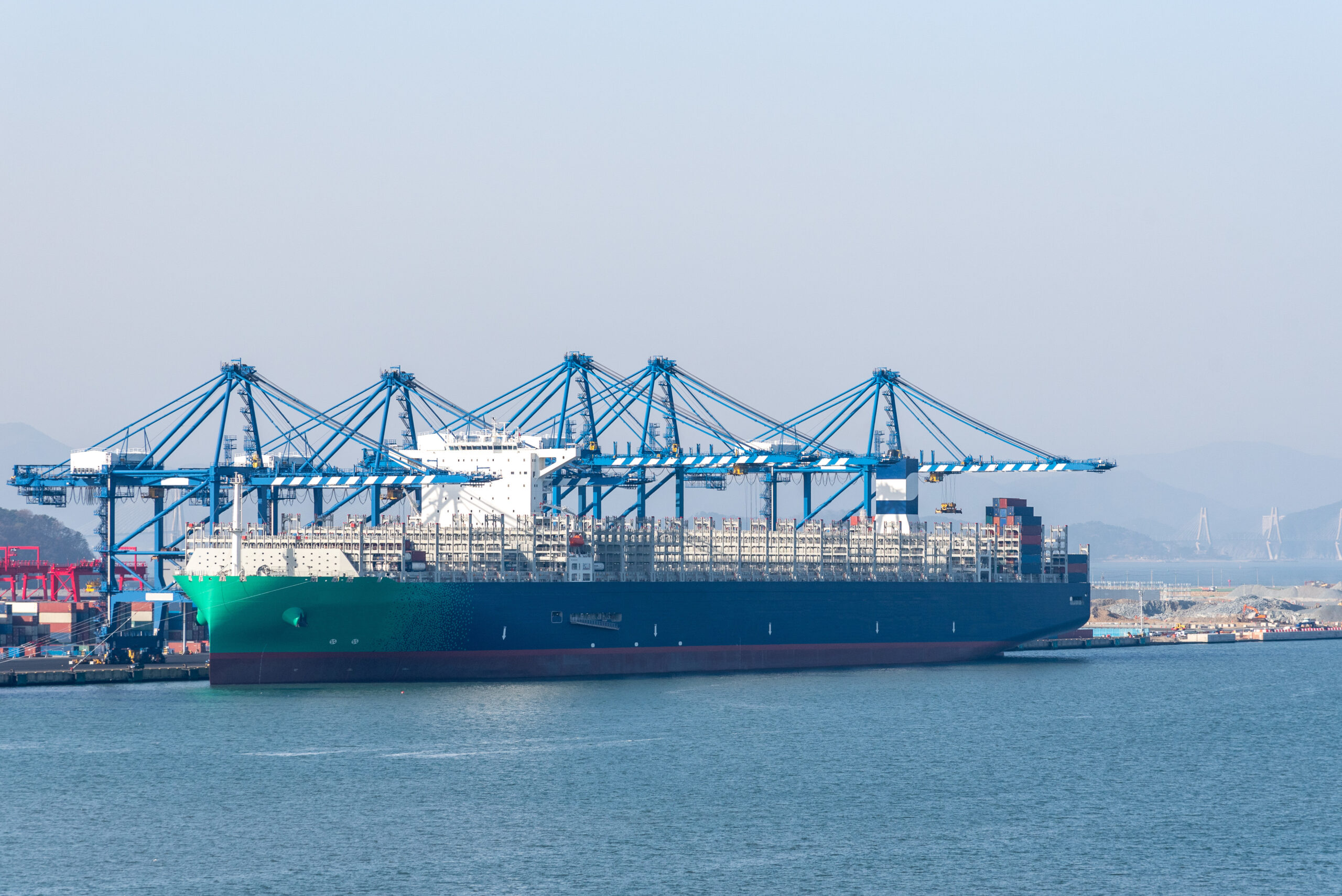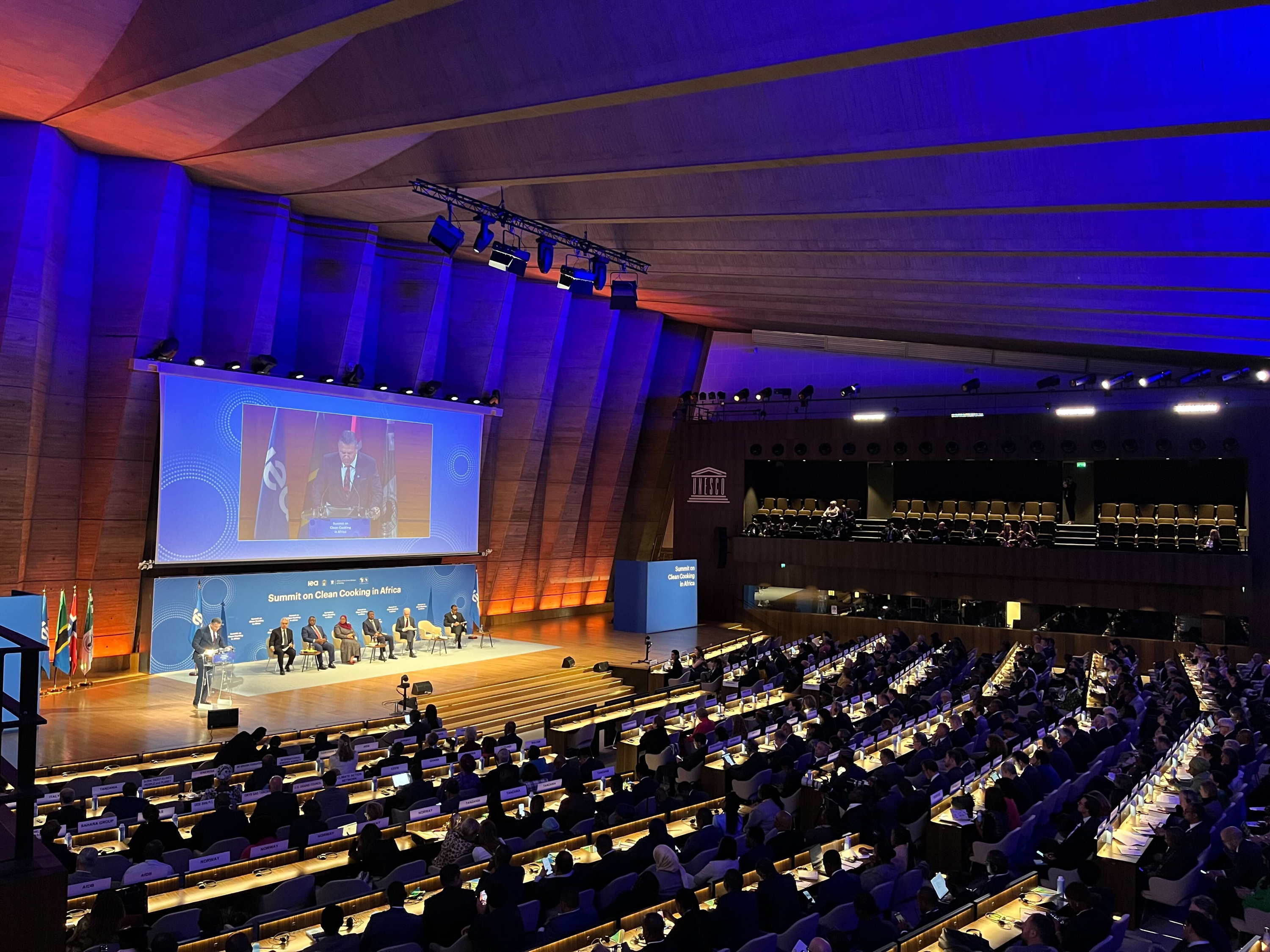Canadian LNG may not reach its potential, industry leaders warn
At an energy conference in Vancouver, industry leaders agonised over the slow progress in building Canadian LNG export terminals.

(Vancouver, British Columbia) — Canada’s gas industry believes that Canada could become an LNG powerhouse, but they also fear that this vision will not be realised.
Speaking at the 2024 Canada Gas Exhibition & Conference in Vancouver on May 7-8, leaders of Canada’s gas and LNG industries fretted that gas export projects in Canada are too costly, constantly bogged down in red tape, and progressing too slowly. They also appeared highly concerned that the Canadian public does not appreciate the benefits their industry provides, nor do they grasp the importance of a potential LNG boom on Canada’s Pacific Coast.
“I think it’s one of the most fundamental opportunities that Canada has,” said Tim McMillan, partner at industry consulting firm Garrison Strategy, and the former head of the Canadian Association of Petroleum Producers (CAPP). “The frustrating piece is we are ten years on in this conference, and longer than that on this opportunity.”
He said Canada has a competitive advantage over other gas producers, including an “incredible natural gas resource, produced with incredibly high standards.” Meanwhile, demand is growing around the world, which would seem to put Canadian gas in a very strong position.
“But we have to have an honest look in the mirror. Canada has seen 16 projects of opportunity dwindle down to just two under construction,” he said, referring to the enormous number of LNG projects proposed in the last decade, most of which were delayed or scrapped. Now, only two LNG projects are currently under development — LNG Canada in northern B.C., and Woodfibre LNG at the southwestern edge of the province.
“We’ve seen the Gulf Coast catch up and surpass us and become the world’s largest exporter. We’ve seen Australia” also become a top exporter, McMillan said. “We’ve seen geopolitical changes around the world that continue to position Canada to have more and more advantages, and yet we can’t get out of our own way.”
Lance Mortlock, managing partner at E&Y, also cited the rapid build-up of the U.S., Australian, and Qatari LNG industries that occurred at a time when Canadian projects struggled. “We kind of missed the boat,” he said. But he added that LNG demand is growing and Canada still has a chance to accelerate development. “The demand is going to be there. What are we going to do about it?
Speakers believed that the stars are aligned for Canadian LNG. Not only did the war in Ukraine put a premium on new LNG supply, but recent disruptions in other trade routes make the Pacific-to-Asia route highly attractive.
Drought has created backlogs at the Panama Canal, which has slowed the shipments from the U.S. Gulf Coast to Asia. Only 15 American LNG cargoes have passed through the canal so far this year, compared to 50 over the same period in 2023, noted Margaret Rogers, a senior editor at S&P Global Commodity Insight. That underscored the advantage of exporting gas from Canada’s Pacific Coast.
“Quick and fast access to the Asian market is a key selling point,” she said.
McMillan blamed the Canadian government for slowing progress. “It’s a political problem,” he said, including too much regulation, too much focus on the energy transition, and the costs of climate policies like the national carbon tax.
He noted that the forthcoming election, which as of now is heavily favouring the Conservative Party, could open up new opportunities for the oil and gas industry. Still, he cautioned that unlike the Conservative government from a decade ago, which very proactively supported the energy industry, politics today have changed. A new Conservative government will support oil and gas development insofar as its helps with kitchen table issues for Canadian voters.
“It’s going to be very different. I think they’re open to investments in energy, but they’re not going to do it for energy’s sake,” McMillan said.
However, other experts believe that the obstacles facing Canadian LNG cannot be laid at the feet of one government. The economic challenges of building up a brand new LNG industry on Canada’s Pacific Coast are formidable. The U.S. Gulf Coast, in comparison, had brownfield LNG import terminals that could be retooled for export, lowering development costs. Pipeline infrastructure in Texas and Louisiana is extensive. In Canada, a lot of that infrastructure needs to be newly built, often in tough terrain.
“I’m currently working on a Gulf Coast offshore project that has costs of $700 per tonne,” Andy Mukherjee, senior vice president of LNG at ST Energy, said at the conference. “Compare that with LNG Canada — $3,400 per tonne. Woodfibre LNG, $2,400 per tonne.”
“What is the impact of that for the buyer? The LNG landing cost goes up,” he said. “So, we have to stay competitive.”
One overarching theme at the 2024 Canada Gas Exhibition & Conference was the belief that the oil and gas industry needed to improve its messaging to win hearts and minds. There was a palpable fear that public perception of the industry was becoming less sympathetic, or, at least, the positive image the industry may have once had in the minds of voters was now slipping.
“We need to do a better job telling our story,” said Lynn Exner, COO of Canada Action, a pro-industry advocacy group. She expressed “concern” that despite Canadian gas having a long list of benefits and virtues compared to gas produced in other parts of the world, that message was not breaking through. “Does Canada need an internal crisis, before we decide to scale up our LNG? I think that’s an important question.”
“The industry has to have cleaner messaging,” agreed Graham Shanks, director of business development at the Canadian pipeline company Enbridge. “We have to have a crystal-clear reason of why we should go forward” with new gas export projects.
Another panel explored the “crisis” facing Canada’s oil and gas industry in terms of attracting and retaining workers. Thousands of workers are expected to retire in the coming decade, and the tainted image attached to the industry — a dirty industry whose days are numbered — was inaccurate, according to a panel of industry workforce leaders. Nevertheless, it is making it more difficult to hire a younger generation of people concerned about the environment.
One area where the gas industry leaders felt they had made substantial progress was on relations with Indigenous communities. Years ago, consultation with First Nations was a check-the-box exercise. But today, First Nations are partners in gas pipelines and LNG terminals. Indeed, speakers at the Canadian gas conference included the officials from First Nations’ governments.
Despite the relatively downbeat mood about the industry’s prospects, the pending upstart of LNG Canada is seen as a chance to jumpstart momentum on other gas export terminals. Backed by Shell, Petronas, Kogas, Petrochina, and Mitsubishi, LNG Canada will be Canada’s first major LNG project and North America’s first major terminal on the Pacific Coast. The massive 14 mtpa LNG export project in Kitimat is slated to come online in mid-2025.
“A lot of credibility has been lost,” Racim Gribaa, president of Global LNG Consulting, said, referring to the failure of many proposed LNG projects. “But this is what I want you to take home with you today. We have a new pipeline across the Rocky Mountains, a colossal project,” he said, referring to LNG Canada and the Coastal GasLink pipeline that will service the terminal.
“We are on the map. All around the world they are talking about Canada as a viable source of LNG,” he said. “We have pipelines on the ground, and we have future projects. Canada is on the map.”
But beyond LNG Canada, which suffered from cost overruns and delays, the speakers exhibited frustration that getting more LNG projects over the finish line could prove difficult.
“It’s time for us to step up, or acknowledge that we’re probably not going to reach our potential,” McMillan said. “And I’m not willing to accept that.”



